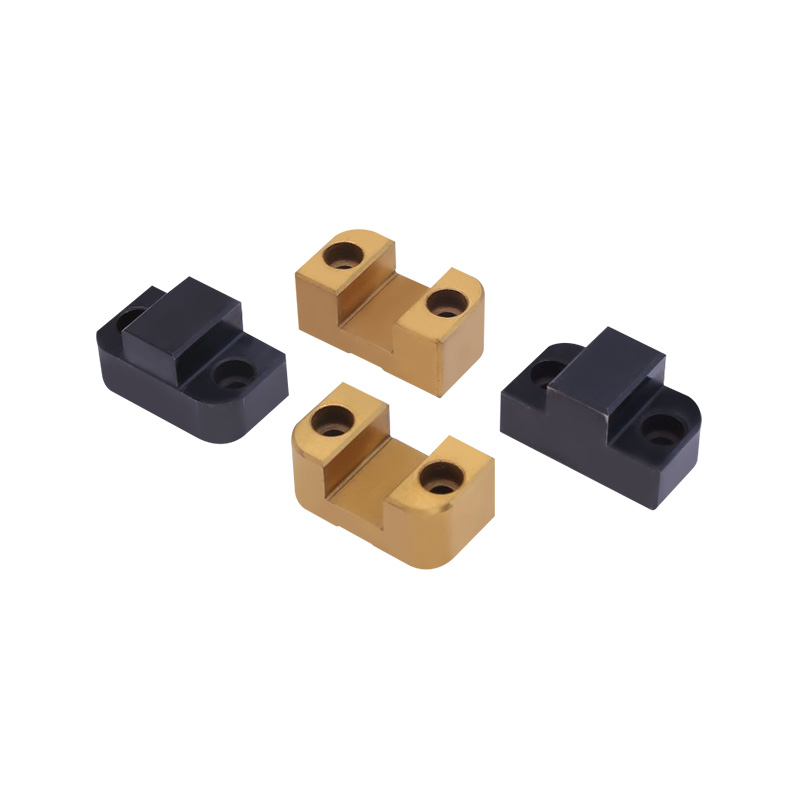Email: [email protected]
How Mold Elements Tackle Sticking, Venting, and Compatibility Challenges?
China Mold Elements Accessories Manufacturer
In the intricate world of manufacturing, mold elements serve as the backbone of efficient and precise production processes. These components, ranging from venting systems to ejection mechanisms, are engineered to address critical challenges such as mold sticking, gas entrapment, and part defects. Beyond their primary functions, mold elements must also exhibit exceptional compatibility and interchangeability to maintain operational fluidity across diverse production environments. This article explores how mold elements integrate these functionalities to optimize manufacturing outcomes while emphasizing their role in modern industrial applications.
The Role of Mold Elements in Preventing Mold Sticking
One of the persistent challenges in molding processes is the adherence of materials to the mold cavity, often to costly delays and defective outputs. Mold elements such as ejector pins, stripper plates, and release mechanisms are specifically designed to mitigate this issue. Ejector pins, for instance, apply controlled force to dislodge solidified parts without damaging their structural integrity. Similarly, stripper plates work in tandem with these pins to ensure smooth separation, particularly in complex geometries.
The surface finish of mold elements also plays a pivotal role in preventing sticking. Polished or textured surfaces reduce friction and adhesion, depending on the material being processed. For example, high-gloss finishes on mold elements are ideal for plastics prone to sticking, while textured surfaces enhance grip for materials requiring precise alignment during ejection.
Venting Systems: A Vital Function of Mold Elements
Trapped air and gases during the molding process can result in incomplete fills, burn marks, or porous final products. Mold elements such as venting channels, porous inserts, and valve gates address this by facilitating the controlled escape of gases. Venting channels, often machined into the mold cavity, allow gases to exit while preventing material leakage. Porous inserts, made from specialized alloys, enable micro-venting in intricate sections where traditional vents are impractical.
The design and placement of these mold elements require meticulous precision. Poorly positioned vents may compromise part quality or create weak points in the mold structure. Advanced simulation tools are often employed to optimize vent layouts, ensuring uniform gas evacuation without affecting cycle times.

Interchangeability and Compatibility: Core Attributes of Mold Elements
In multi-cavity or modular mold systems, the ability to interchange components is paramount. Mold elements must adhere to standardized dimensions and tolerances to ensure seamless integration across different setups. For instance, ejector pins with uniform diameters and lengths can be swapped between molds with minimal recalibration, reducing downtime during maintenance or product changeovers.
Compatibility extends beyond physical dimensions. Material selection for mold elements must account for thermal expansion, wear resistance, and chemical compatibility with the processed materials. Hardened steel components, for example, are favored for their durability in high-temperature environments, while aluminum alloys offer lightweight alternatives for rapid prototyping molds.
Precision Engineering for Optimal Performance
The efficacy of mold elements hinges on precision manufacturing techniques. Computer Numerical Control (CNC) machining and electrical discharge machining (EDM) are widely used to achieve tight tolerances and complex geometries. For instance, micro-milled venting channels with tolerances as low as ±0.005 mm ensure consistent gas flow without compromising mold integrity.
Alignment features such as guide pins and bushings further enhance compatibility. These mold elements ensure that multi-part molds close with registration, minimizing flash and misalignment defects. Additionally, modular mold systems leverage standardized base plates and interchangeable inserts, enabling manufacturers to adapt quickly to design changes or scale production.
Case Study: Mold Elements in Automotive Part Production
The automotive industry exemplifies the importance of advanced mold elements. A single dashboard component mold may incorporate hundreds of elements, including cooling channels, ejector systems, and multi-stage vents. Here, compatibility is critical—each element must function harmoniously under high-pressure injection conditions.
For instance, gas-assisted molding techniques rely on precisely timed valve gates (a type of mold element) to inject nitrogen into the material, creating hollow sections that reduce weight without sacrificing strength. The interchangeability of these gates across different molds allows manufacturers to reuse components, lowering production costs.
Innovations in Mold Element Technology
Recent advancements have expanded the capabilities of mold elements. Additive manufacturing now enables the production of conformal cooling channels that follow the contours of the mold cavity, improving thermal management. Smart mold elements embedded with sensors provide real-time data on pressure, temperature, and wear, enabling predictive maintenance and process optimization.
Moreover, self-lubricating coatings applied to mold elements reduce the need for external release agents, enhancing sustainability. These innovations underscore the evolving role of mold elements in addressing both traditional challenges and modern manufacturing demands.
Mold elements are far more than passive components—they are dynamic solutions engineered to resolve specific production challenges. From preventing sticking through precision ejection systems to enabling gas escape via sophisticated venting mechanisms, these elements directly impact product quality and operational efficiency. Equally vital is their compatibility and interchangeability, which ensure adaptability in fast-paced manufacturing environments. As technology advances, mold elements will continue to evolve, offering smarter, more resilient solutions that push the boundaries of what is achievable in modern industry.
By understanding and optimizing the functions of mold elements, manufacturers can unlock new levels of productivity while maintaining the flexibility required to meet ever-changing market demands. Whether in automotive, consumer goods, or aerospace applications, the strategic integration of these components remains a cornerstone of successful manufacturing.
Get in touch
Related recommendations
